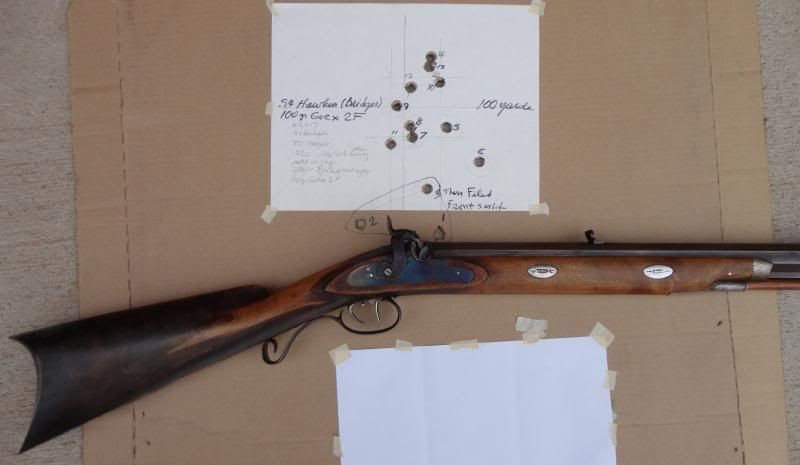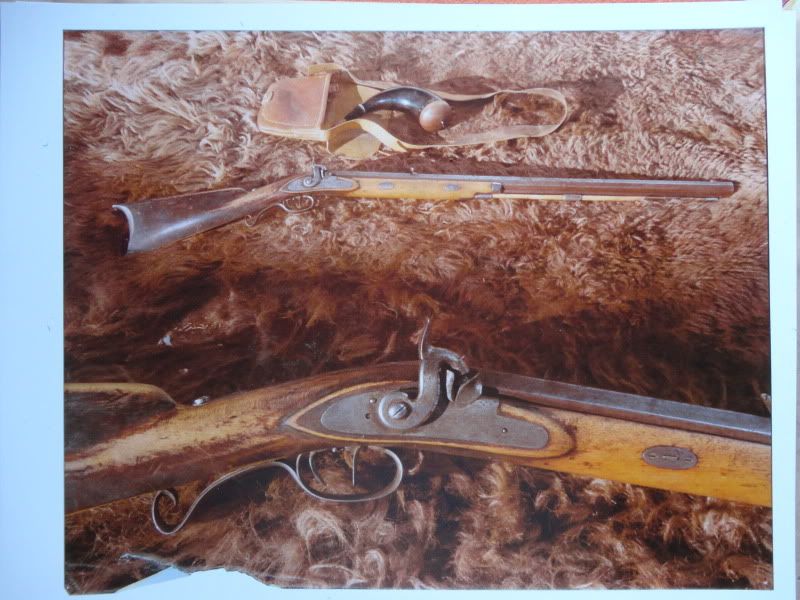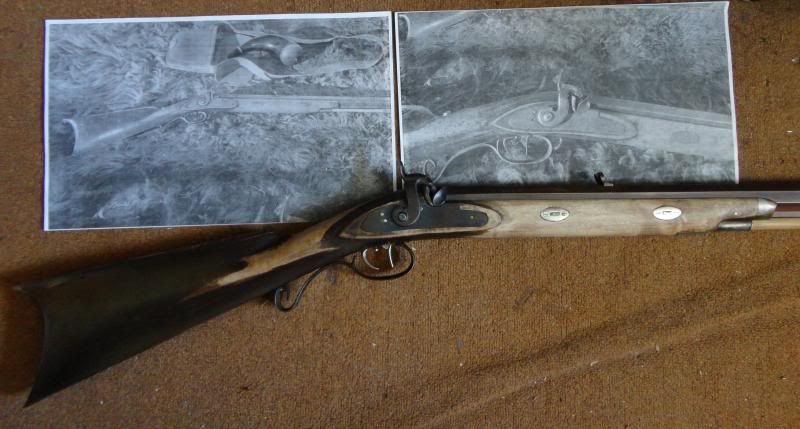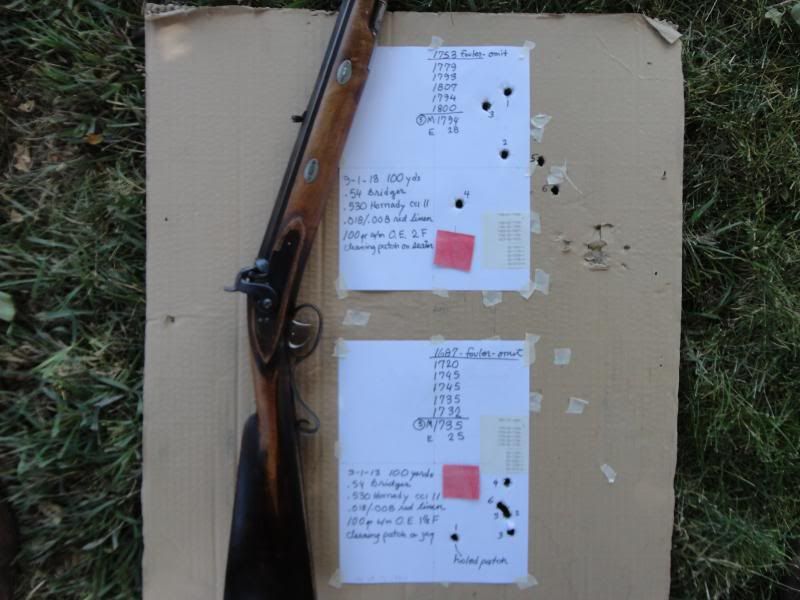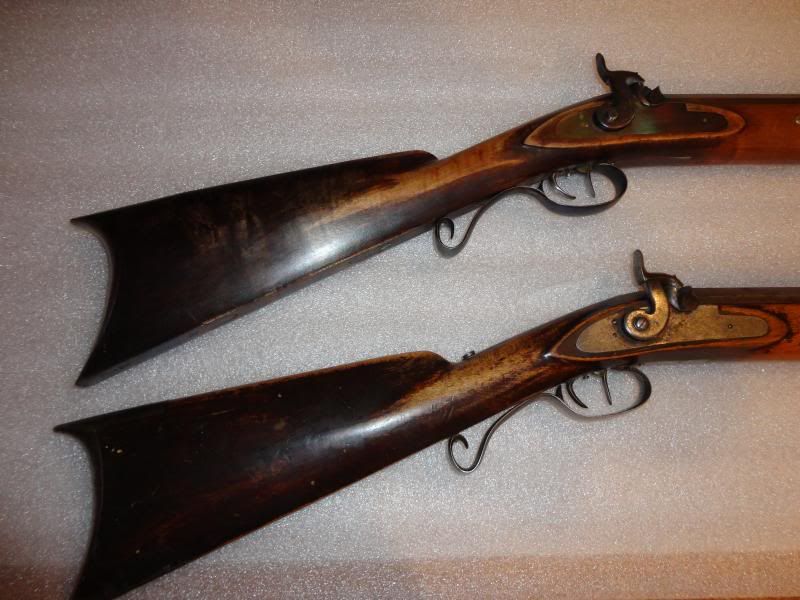Herb,
I want to commend you on this rifle. The last photo looks very good, you really knocked the raw edge of it and I think it turned out beautifully.
As far as aging goes, anyone who has browned a barrel on most guns especially Hawken rifles is guilty of the sin of aging.
It's my understanding that Hawken rifles had the following finish when new.
deep satin black rust blued barrels,under rib and trigger guard.
case colored lock and butt plate and a case colored nosecap of iron or poured pewter
the triggers may have been straw colors, the screws fire blued
the stock most likely a brown oil varnish but maybe not dark brown
So a new Hawken was a sight to behold and a mixture of color. I think you have done a fine job in capturing the look of a newer Hawken with your other rifles. You know your stuff.
I think aging or at least the study of it will only enrich a gunmaker's skill. If you know how a gun ages and understand it. It can give you much more insight on what the gun looked like new and how to replicate that. We study every detail of theses rifles but do we pay enough attention to how they age?
Let's look at the Hawken again. Most think and maybe even demand that a Hawken have dark brown stock, grey locks and a brown barrel. What they base this on is 170 year old originals.
This is my opinion on what's going on here with the Bridger Hawken.
Note that the top of the barrel is greyed but that on the side flat down, especially in front of the nose cap is brown. The rust blue has turned brown but the top is gray from the finish being worn away.
Note that the lock is gray from losing it's case colors over time and has even started to turn brown in areas. Same for the TG.
By far the most striking feature of that rifle is the the stock finish. It appears to be almost rubbed away. Lets take a closer look though. To me it actually looks like the forestock has finish.
It's my opinion that that honey color may actually be closer to the the original finish and that the dark brown areas may be from oxidation of the varnish.
Sure, some of the stock finish is rubbed away but not as much as you would think IMHO.
In it's period of use, the handling may have kept the oxidation from forming. Another thing is look at the snail. It's obvious that this rifle has seen heavy use but it was well cared for. There is no corrosion like you see on some guns and rifles where the drum, breech, hammer, stock and top of the lock are eaten away or heavily pitted. Someone "Bridger" kept this rifle clean probably by wiping that area down in it's period of use and that may explain the lack of oxidation on the lock, barrel and forestock.
I think what may may have hurt you a little here is going by the B W photos. In Black and white it does look like the finish is gone.
In doing this kind of aging I like to replicate the process. I've done this to a few "family guns" that were nearly ruined by poor refinish attempts.
I would have considered that honey yellow the base coat. I would have finished the whole stock in that honey yellow since I consider that the original underlying finish.
I then would have applied the bark brown oxidation maybe even with a little black towards the butt. I might have used flat brown with a little flat black paint for this.
I then would have rubbed that away revealing the yellow and maybe some of the wood at the top the comb, wrist and edges of the lock panels. When satisfied I would have coated and polished the stock with a good paste wax.
That's the way I would have done it.
I do think it turned our beautiful.
Herb, You know far more about theses rifles than I. If I said anything that's not true about the original finish please correct me.
